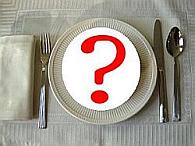The estimated minimum sodium need for adults is 500 mg. per day. Most of us take in 4000-6,000 sodium daily. Nutrition label is a great tool to determine the estimated amount of sodium you get from your food daily. Get in the habit of reading sodium facts whether you have a health condition that require a low sodium diet or you would like to reduce your health risks by consuming a healthy sodium level.
It is a good idea to read the Nutrition Facts Label for all the grocery you buy. I know it seems like a bit of work. Most of us tend to buy the same favorite products and you will only have to pay attention to the new food. I like to cut out the front of the box of products my family likes and has the healthy amount of sodium, sugar, or fat. We keep all these in see through folder in the kitchen. It’s sort of a food diary.
Nutrition Facts – take note of:
- Serving size – how many servings will you really use?
- How much sodium – 140 mg or less per serving is a healthy choice
- Ingredient list (at the bottom) – look for sodium containing compounds.
Watch for sodium-containing compounds like these:
- Monosodium glutamate (MSG)
- Baking soda
- Baking powder
- Disodium phosphate
- Sodium alginate
- Sodium nitrate or nitrite
The total mg / serving of sodium won’t change. Its good go know for the next time you bake that baking soda, baking powder have sodium. You would want to know if your food product has Monosodium glutamate. MSG when consumed can give adverse side effects for many people. Migraine headache is a common complaint.
Remember the healthy recommendation of less than 2,400 milligrams of sodium a day, the same as 6 grams salt, or about 1 teaspoon. Research studies have shown that people who can stick with a diet of 1,500 mg of sodium a day would benefit from maintaining their normal blood pressure, and improve effectiveness of their medications.
Buy foods with these on the label:
- Sodium-free – less than 5 milligrams of sodium per serving
- No added salt or unsalted (does not mean sodium free)
- Very low sodium – 35 milligrams or less sodium per serving
- Low sodium – 140 milligrams or less per serving
- Reduced sodium – about 25% less sodium
Related posts:
Salt Substitute and Sea Salt for Low Sodium Diet
Tips for Low Sodium Diet Plan
Seasonings for Low Salt Diets
Where Do I Get Sodium?
Sodium Chloride and Health



{ 0 comments… add one now }